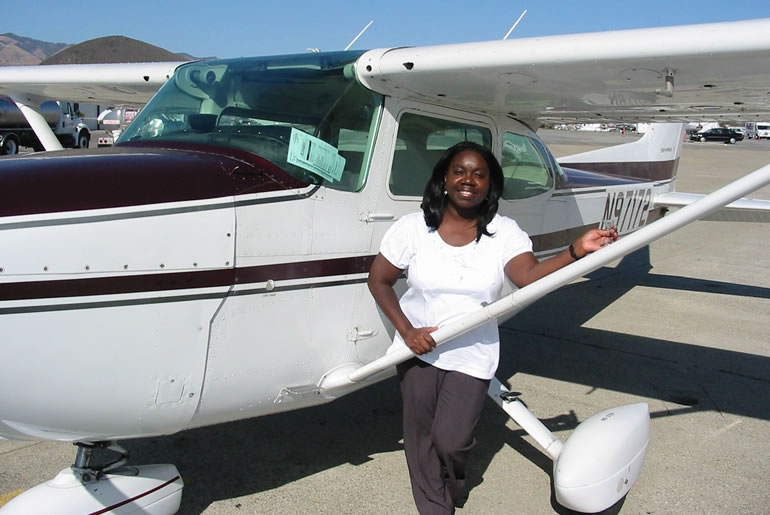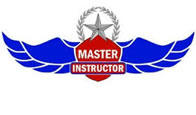
Theodora Nana Smith
The following is being shared because it illustrates the importance of creating a training environment that, not only, teaches the knowledge and skills required to fly but also recognizes that each student is different. As an instructor it is important to recognize these differences and to craft an approach that meets the training requirements, positively reinforces achievement and most importantly demonstrates patience and creativity when dealing with each individuals unique background and learning style.
Over a year and a half ago I met an engaging woman at the Women in Aviation conference in San Diego. I had been asked to participate in an event, as a facilitator, which gave the WAI participants an opportunity to dialog about a variety of subjects related to flying. The participants rotated from table-to-table each 30 minutes and as it turned out Theodora Smith and I were the only people at my table during one of the rotations.
Theodora is a Flight Attendant for US Airways and several years earlier had embarked on a path to realize a long held dream to learn to fly. Theodora earned her Private Pilot license and along the way lost her confidence in her ability to fly and to continue the process of expanding her skills and the ratings required to consider other options in aviation.
As we discussed what had happened she shared a story that I have heard and witnessed first hand, a number of times, during my years as a Flight Instructor. Theodora was not the “typical demographic” for someone embarking on a possible career as a professional pilot. She was a forty something woman, had taken a leave from her position as a Flight Attendant, and needed an environment that would be patient, nurturing and recognize her personal learning style. In an effort to achieve her goal she navigated through three different flight training institutions and eventually earned her Private Pilot license. But along the way the fire and the enthusiasm had been crushed and she did what many others have done; stopped flying but the ember still burned inside. As we talked further I invited her to come to California and give me an opportunity to restore her confidence and her competence as pilot in command. She said that she would consider the offer and a little over a year later she arranged her schedule and took me up on my offer.

It was hard work but well worth the effort!
The intent of the time we spent together was to provide her with a confirmation that she is a competent pilot with sound fundamentals and that she was more than capable of continuing the path started a number of years earlier. We achieved this goal and I am very proud of her for her tenacity and commitment to excellence in spite of the challenges that this process presented.
For me the best part of this story is that the time we spent together has forged a friendship that I trust will last for many years and that I will have the opportunity to continue nudging Theodora forward as she continues to pursue her dream.





